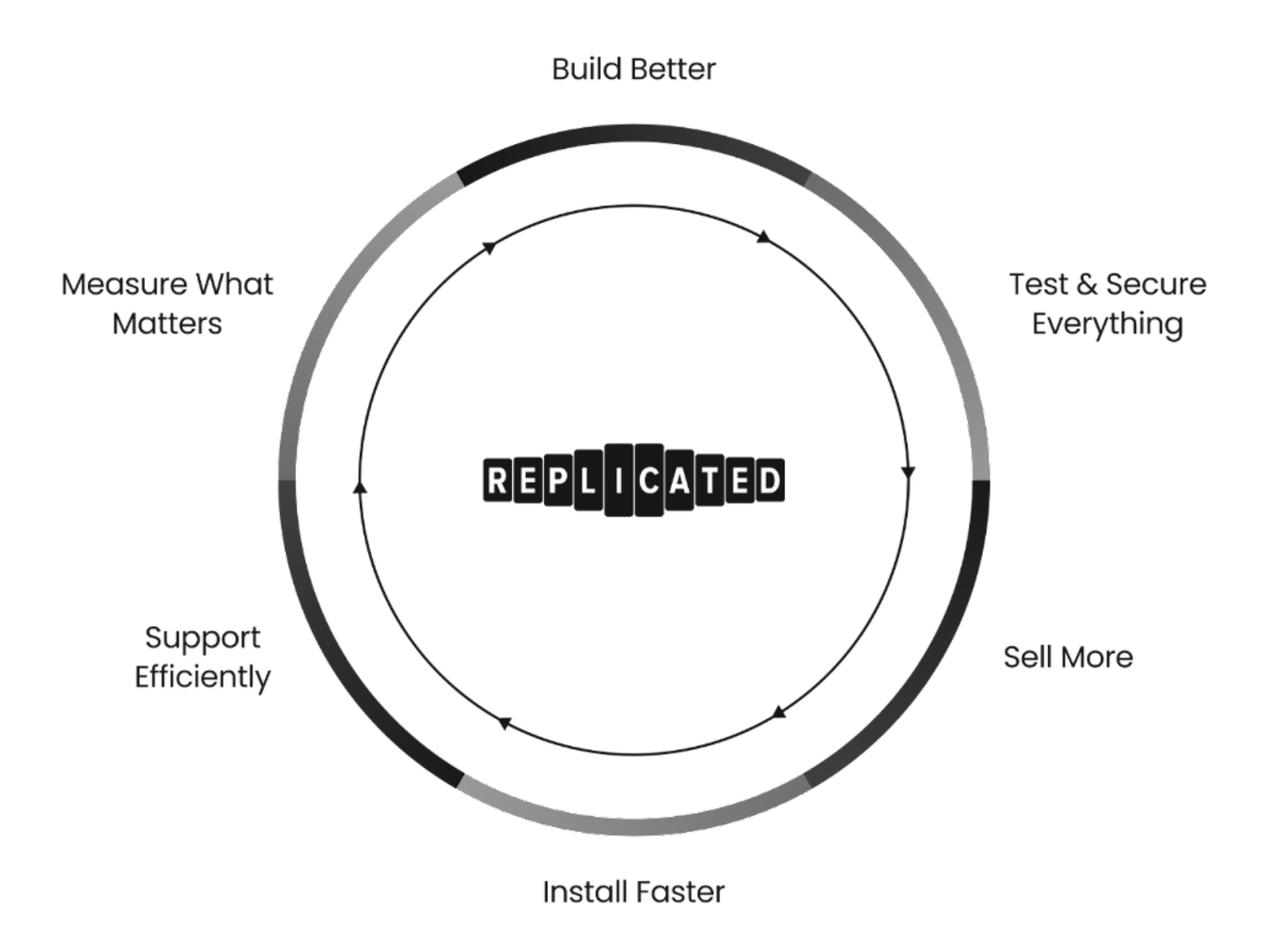
In the five years since Helm was declared a top-level CNCF project in June 2018, it has become the industry preferred tool for defining, sharing, and installing applications on Kubernetes.* But that sentence gets an asterisk because for software vendors with paying customers, there are a lot of additional capabilities necessary to be successful. While Helm does its specific job of installing apps very well, Helm alone is not enough to handle the full lifecycle of commercial software distribution.
We at replicated absolutely adore Helm. It provides mature tooling to establish reliable application installs, updates, and even rollbacks. Before Helm grew to its current level of popularity, most software creators had to build their own custom installers and painstakingly document requirements, steps, and common issues. The hidden pain of DIY installers was so painful that replicated found a market need and developed open source KOTS, kURL, and Troubleshoot to help, and these tools still underpin our enterprise platform eight years since our own founding. Yet Helm has grown in popularity due to the contributions of many fine developers, and we want to recognize its success in standardizing how applications get installed within many organizations.
Helm in context of the software distribution lifecycle
Building on Helm’s success, we’ve also come to realize that Helm can be enhanced and optimized, specifically for commercial software vendors who need to take ownership of more than just the installation process to satisfy the needs of their enterprise customers. The simple diagram below shows a virtuous circle of the commercial software distribution lifecycle (an adapted version of Jim Collins’s flywheel concept.)

Each arc of the circle represents a distinct set of activities that software vendors should conscientiously pursue:
- Build better products efficiently managing releases and innovation.
- Test and secure everything to reduce risk of issues in customer instances.
- Sell more to an expanded addressable market including on-premises and cloud.
- Install faster with more predictable success in complex environments.
- Support efficiently to reproduce, resolve, or even avoid problems entirely.
- Measure what matters to gain actionable insights on your entire business.
And most critically, RINSE AND REPEAT the cycle to continuously improve their product and customer success!
How to complement Helm for commercial success
Once you shift your mindset to think about the broad software distribution lifecycle (not to be confused with the more narrow software development lifecycle), it becomes immediately clear what we mean when we say Helm alone is not enough. Of those stages described, Helm is only focused on addressing the “Install Faster” piece, as it really only impacts installation and upgrades. If you click through any of the links below, you’ll quickly see a whole host of additional capabilities needed to address common challenges, including:
- Build better with proven facilities for managing release channels, a customer-facing admin console GUI, plus prospect and paying customer accounts, feature entitlement controls, and integration with CI/CD.
- Test and secure everything in rapidly-provisioned, customer-representative environments, and maintain confidence in software supply chain security.
- Sell more with the ability to deploy in customer-managed resources and VPC, even air gapped locations for the most security-conscious, high-value opportunities.
- Install faster with the ability to create an ideal K8s cluster for your application, pre-check suitability of diverse environments, add a registry proxy, and provide for customers less comfortable with K8s and Helm.
- Support efficiently with customizable bundles of configuration and diagnostic info, notifications, automated updates with semantic versioning, and tier 2 and 3 elite support when you need it.
- Measure what matters with instance insights, adoption reporting, uptime and event history, and many more invaluable yet strangely often overlooked business metrics.
To be truly successful as a commercial software vendor, you need a fully comprehensive approach. In-house and open source software can cheat a bit since the application users are either 1/ employees of the same company as the developers or 2/ getting something for free and shouldn’t expect the same level of service from contributors. For every other scenario, let’s recognize that while Helm is great, let’s complement it with advanced capabilities to make the customer experience much greater!
To learn more about how replicated is enhancing Helm, sign up now to learn more and join our waitlist.